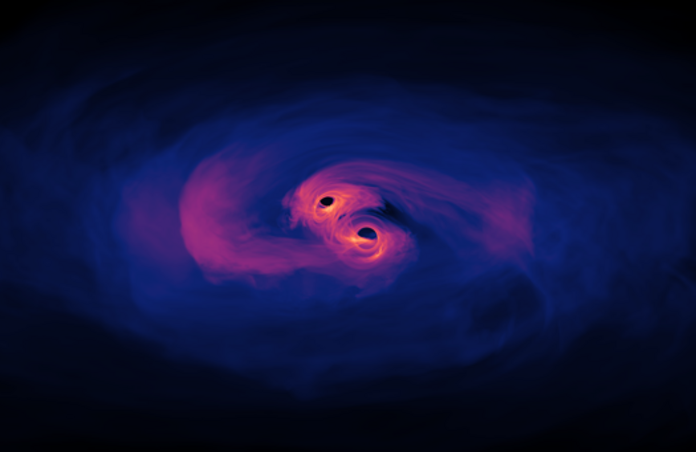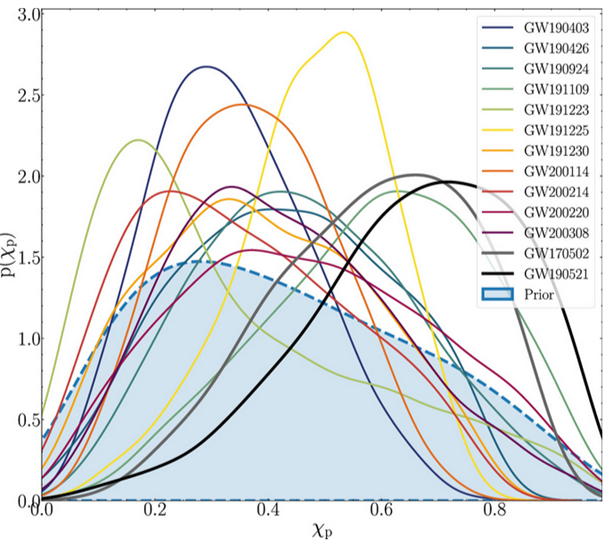Gravitational-Wave Mergers Hint at Intermediate-Mass Black Holes

Black holes are known to exhibit a striking diversity in their size. At the lower end are stellar-mass black holes, typically ranging from about 3 to 150 solar masses (M☉). These form when the cores of massive stars exhaust their fuel and collapse under their own gravity. At the other extreme are supermassive black holes (SMBHs), usually located at the centres of galaxies. Their masses start around 10⁵ M☉ and can reach several billion solar masses. The origin of SMBHs remains an active area of research, with two leading hypotheses. The light seed model involves growth from smaller black holes and accreted matter, while the heavy seed model posits the direct collapse of massive gas clouds.
Notably, there are very few candidates for black holes with masses between these extremes, despite prior studies demonstrating that multiple astrophysical processes could, and should, result in the formation of such bodies. These are known as intermediate mass black holes (IMBH) and it remains unclear whether this gap arises due to observational constraints, or yet to be understood processes that might hinder IMBH formation.
Now, a study led by Krystal Ruiz-Rocha investigates data sourced from the LIGO, Virgo and KAGRA (LVK) detectors, which have captured gravitational wave (GW) data sets from multiple neutron star and black holes mergers. The team analysed eleven GW events and candidates, identifying five which likely resulted in post-merger remnants with masses between 110 and 300 M☉, with greater than 95% confidence.

To perform their analysis, the team used an algorithmic fitting tool called RIFT, which compares observed GW data to synthetic waveforms generated from sets of orbital parameters. They integrated three different waveform models, each designed to capture different physical aspects of black hole mergers, such as precession.
Rift then computes marginal probability distributions over an orbital parameter space, identifying the most likely combinations of masses, spins, and orientations that match the data. Among their waveform models, the team selected NRSur7dq4, a highly accurate model designed to abide by general relativity, as their primary reference. However, they carefully examined results across all three models and flagged cases where the models produced significantly conflicting estimates.

As mentioned, their results indicated five GW events with a post-merger remnant in the IMBH range. Of their detections, they found the heaviest total source mass to be GW191223, with an estimated mass of 347⁺⁸⁶₋₇₁ M☉ which, by their estimate, confidently places it in the IMBH category. Curiously, some individual pre-merger black holes also had masses that lie within the so-called PISN mass gap (60–120 M☉), where black holes are unable to form under standard stellar models.
The team does note significant discrepancies between models that arose within extreme systems. In response, they call for a need to develop more robust models that are capable of producing accurate waveforms in massive, high-spin and highly eccentric systems. Furthermore, they note concerns with the data in five of their targets, due to low-frequency noise pollution. In external interviews, they have discussed the potential of lunar-based observatories capable of capturing higher-quality data.
--
Journal Source: K. Ruiz-Rocha et al, Properties of “Lite” Intermediate-mass Black Hole Candidates in LIGO-Virgo’s Third Observing Run, The Astrophysical Journal Letters, Vol. 985, No. 2, (2025), DOI: https://doi.org/10.3847/2041-8213/adc5f8
Cover Image Credit: NASA
